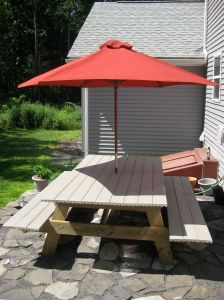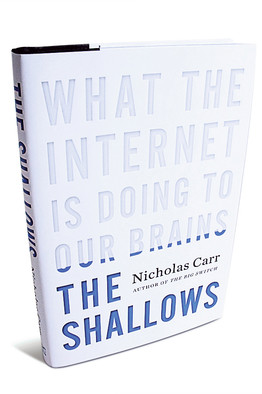I’ve had the David Bowie song “Changes” stuck in my head for several days now. It simply won’t go away.
This started out as a short writing piece I began in front of my English 10H class last week. One of my typical tricks is to turn on the LCD projector and begin writing in the same way I ask them to write their first drafts. Freely, without fear, writing from the gut, paying no attention whatsoever to the little kid inside the head that calls your work “stupid.”
I knew I wanted to write about change. And about two minutes into my freewriting, the tune popped into my head:
Ch-ch-ch-ch-Changes
(Turn and face the strain)
Ch-ch-Changes
Don’t want to be a richer man
Ch-ch-ch-ch-Changes
(Turn and face the strain)
Ch-ch-Changes
Just gonna have to be a different man
Time may change me
But I can’t trace time
I’m not sure Bowie’s song holds the key to any new brilliant observations on life. But I do think that when my brain keeps coming back to a topic like this, there’s probably something in it. I’ve learned over the years to trust this more intuitive part of my mind.
So wherefore this song?
Bowie, I gather, was commenting at least in part on how artists have to continually reinvent themselves. This isn’t necessarily a happy thing — Bowie opens the song by alluding to “A million dead-end streets” and continuing that “Every time I thought I’d got it made/It seemed the taste was not so sweet.”
Later in the song:
I watch the ripples change their size
But never leave the stream
Of warm impermanence and
So the days float through my eyes
But still the days seem the same
At the best, Bowie has a benevolent indifference to change. And that’s where this song rings true to a teacher. With all the changes happening in schools today, is it reasonable to expect most teachers to feel anything else?
“Good news! This year we’re doing professional learning communities! Yippie!”
“Guess what? We’ve adopted new Common Core curriculum standards. You get to remap your curriculum!”
“Yay! We’re installing a new teacher evaluation procedure! Fun times!”
And for what it’s worth, I’m more or less in favor of each of these changes. But the fact that I support them doesn’t mean they’re not intensely disruptive.
Sometimes disruption is good. Fine. We all need to be broken out of the ruts in our personal road every now and then.
But there’s so much change.
Of course, there are other emotions teachers are feeling:
And these children that you spit on
As they try to change their worlds
Are immune to your consultations
They’re quite aware of what they’re going through
Who’s really treated like these children in the current educational climate? Teachers these days are, as Bowie puts is, “up to their necks in it.” Currently the public whipping child for everything that is wrong with society, they are quite aware of what’s going on in their profession.
How should a teacher negotiate change? This has been a running theme in my writing and work over the past few years, as I try to learn how to use technology in teaching, rather than allow technology to use me.
I’m hoping I’ll find some answers in the book I’m currently reading: Diane Senechal’s Republic of Noise: The Loss of Solitude in Our Schools. This was a book that I knew I would eventually have to read, mainly because an exchange a few years back I had with the author over the use of blogs in education showed me I had far more in common philosophically with the writer I was criticizing than the people who came to my defense. I’m certain I’ll have more to say about it later.
But one passage from her book is in order here. Noting how one university professor defended the use of clickers in the classroom by saying that teachers “just (have) to be more interesting than YouTube,” Senechal writes,
It is a strange era where a teacher must compete with other forms of entertainment; it suggests an end not only of concentration but also of respect and wisdom.
Bowie would call this a “strange fascination, fascinating me.”




 Carr’s book posits that the explosive growth of digital media is essentially shortening our attention span, literally changing our brains from ones able to focus on books to brains which are better designed to handle the often chaotic firehose of information that is modern media. “Calm, focused, undistracted, the linear mind is being pushed aside by a new kind of mind,” Carr writes, one “that wants and needs to take in and dole out information in short, disjointed, often overlapping bursts–the faster, the better.” While paying tribute to both the inevitability of change and the benefits new technologies bring, Carr’s book is an implict warning about the future.
Carr’s book posits that the explosive growth of digital media is essentially shortening our attention span, literally changing our brains from ones able to focus on books to brains which are better designed to handle the often chaotic firehose of information that is modern media. “Calm, focused, undistracted, the linear mind is being pushed aside by a new kind of mind,” Carr writes, one “that wants and needs to take in and dole out information in short, disjointed, often overlapping bursts–the faster, the better.” While paying tribute to both the inevitability of change and the benefits new technologies bring, Carr’s book is an implict warning about the future. 